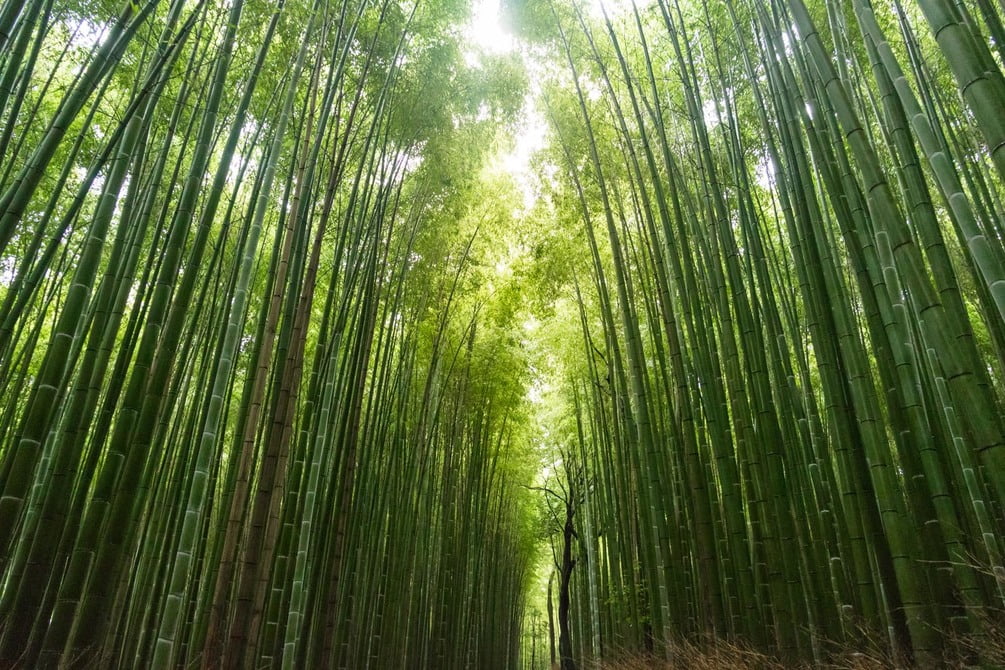Bamboo might be the construction material of the future. It is a perfect natural building material. For one, the plant can grow up to four feet per day. When harvested, bamboo regrows without having to be replanted. This makes it one of the best sustainable resources on the planet. And it is two to three times stronger than steel. Let’s take a look at some bamboo facts that make the tree special.
The origin of the word Bamboo
The origin of the word is from the Malay word “Mambu”. Malay is the national language in Indonesia and Malaysia. In the 16th century, Dutch named it Bamboes. Some say that the original word for the tree was Bambu. The word resembled the sound the tree makes when exploding in open fire.
When heated, the air in the sealed hollow internode chambers explodes. They cause an explosive bam-boom sound.
Guinness World record
We said bamboo grows very fast. Certain types of bamboos grow even faster. The tree holds the Guinness world record for fastest growing plant. The bamboo was able to grow as fast as 35 inches in a single day. To put in a perspective, that is 1.5 inches per hour. You can sit and watch the tree grow before your eyes.
The tallest recorded bamboo in the United States is between 65 and 98 feet tall, while the one in Europe is 130 feet tall.
Stronger than steel
Think of some of the strongest material on the planet. Is bamboo on your list? Well, it should be. Bamboo is stronger than steel, about two to three times. Bamboo can withstand being smashed better than average concrete.
This is why we use it to make bicycle frames. Bamboo is lightweight, but has incredible strength. Ideally, we should replace wood with bamboo in traditional uses for a building.
Natural antibacterial properties
Another benefit of bamboo is the natural antibacterial properties. This makes it ideal material for clothing. Bamboo kills almost all bacteria over a 24-hour period.
In clothing, this means less stinky clothes and cleaner clothes. It also means you do not need to wash your clothes as frequently.
Is it a tree or grass?
Bamboo belongs in the Bambusoideae subfamily of the perennial evergreen grass family Poaceae. The German botanist Charles Kunth was the first one to publish the taxonomic findings in 1815. Of all grasses, bamboo is the only one that can diversify into forest.
While technically it is a grass, many of the bamboo species are tree-like. We even call them bamboo trees. But there are differences between grass and trees. For starters, bamboos do not have a bark as trees do.
Great oxygen producer
Bamboo grows faster than other plants, and produces 35% more oxygen than hardwood trees. Studies show bamboo can absorb up to 12 tons of carbon dioxide per 2.5 acres in a single year. Bamboo is one tree that can help stabilize the planet’s atmosphere.
Renewable resource
What makes the bamboo great is its renewable nature. It grows faster, and you can harvest if from one to five years after planting. Trees like oak take decades before they are ready for harvest. Bamboos cut our need for deforestation.
The tree regrows without the need of replanting.
Bamboo deodorizer
We mentioned that bamboo finds its usage in clothing and textiles because of the antibacterial properties. But the tree is also a great deodorizer. This is why there are bamboo diapers nowadays. You can find many products with bamboo charcoal that deodorize smells.
How many bamboo species are there?
There is a total of 1575 identified species in 111 different genera. There are more than 100 species used commercially. Of them, 20 are priority species for those wishing to start bamboo plantation.
Bamboo survived Hiroshima
If you need any more proof about the strength of bamboo, look no further. Bamboo is the only plant to survive the radiation of Hiroshima. The incinerating heat destroyed all trees and plant life. But the bamboo grove survived. Culms from the grove can be found in a museum in Hiroshima.



